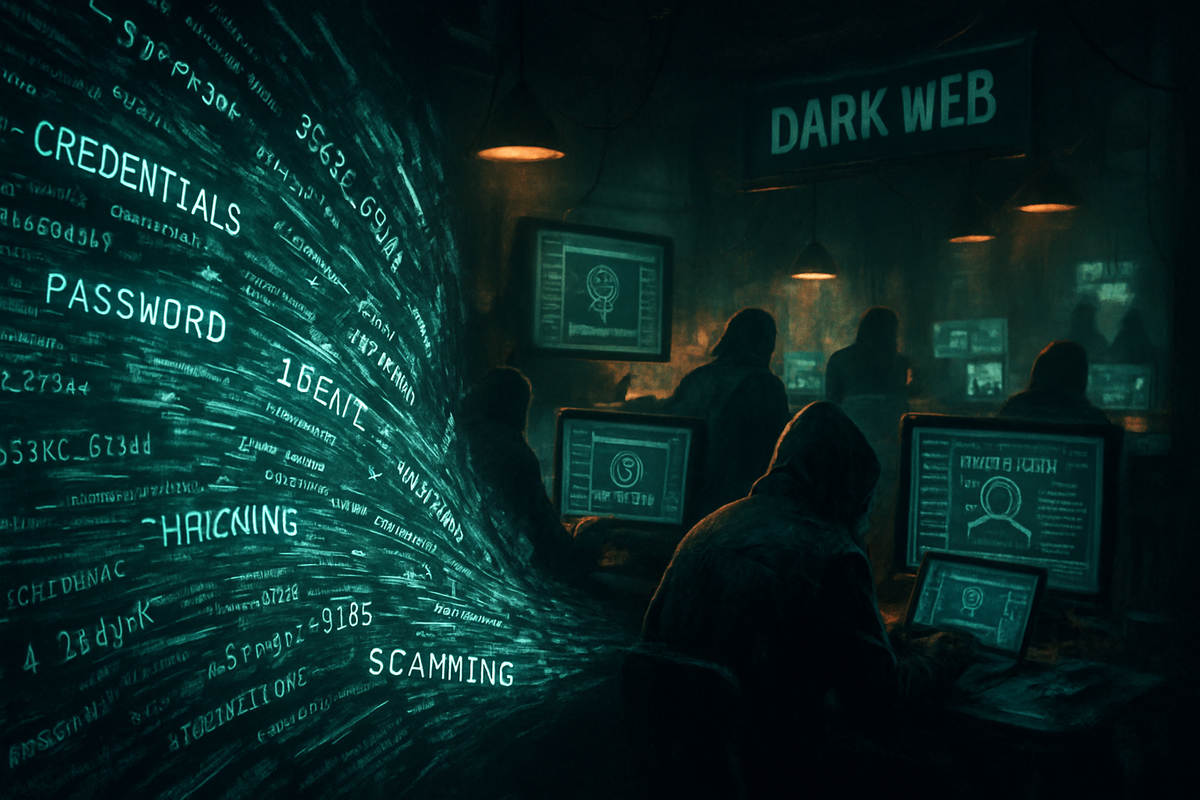The AI-Driven Cybercrime Economy: How Stolen Data Powers a Billion-Dollar Underground
Discover the AI-driven cybercrime economy that's turning data into digital gold, faster than you can say 'two-factor authentication.' Stay ahead with strategies that use AI for defense in this high-speed, global battle for cybersecurity supremacy.

Welcome to the New Cybercrime Gold Rush
Imagine this: somewhere, right now, an AI bot is scanning the internet for vulnerable systems, at a dizzying rate of 36,000 scans per second. Within minutes, it can snatch up thousands of passwords, credit card numbers, or medical records, and ship them off to a digital bazaar where your personal data is traded like Pokémon cards. Welcome to the AI-driven cybercrime economy—a billion-dollar underground that’s growing faster than you can say “two-factor authentication.”
“Cybercriminals are using AI to scale attacks, automate credential theft, and even write convincing phishing emails. The dark web is no longer run by hoodie-wearing amateurs—it’s a high-speed, AI-powered marketplace.”
— Dr. Aisha Patel, Cyber Threat Intelligence Lead
How AI Supercharges the Dark Web’s Data Pipeline
The journey of your stolen data is a cyber-thriller in itself. Let’s break down the flow:
- Phase 1: Automated Breach
AI bots probe networks, exploit vulnerabilities, and exfiltrate massive troves of data—often before anyone notices. - Phase 2: Credential Harvesting
Specialized malware (sometimes built with AI help) scoops up usernames, passwords, and even session cookies as you browse or log in. - Phase 3: Data Laundering
Stolen info is cleaned, sorted, and packaged—using automation and machine learning to filter out the “junk.” - Phase 4: Marketplace Listing
AI-driven dark web platforms match buyers with sellers, offering search, escrow, and even customer reviews. You can buy anything from a Netflix login to a hospital database. - Phase 5: Monetization
Fraudsters use stolen credentials for identity theft, account takeovers, ransomware, or good old-fashioned blackmail. Meanwhile, your data is often resold, again and again.
“We’ve seen AI models that can reverse-engineer malware or even automate the process of hacking into systems. The speed is staggering—what used to take days now happens in minutes.”
— Marcus Lee, Incident Response Specialist
Numbers That Will Make You Want to Change Your Password (Again)
- 1.7 billion+ credentials are currently circulating on the dark web, fueling a 42% surge in credential-based attacks (Fortinet 2025).
- Major breaches like the Marks & Spencer ransomware attack cost hundreds of millions and exposed sensitive consumer info for weeks.
- AI-powered scanning and credential stuffing are up 500% year-over-year.
- The United States alone absorbs 61% of global ransomware incidents.
Case Study: From Breach to Black Market in 48 Hours
In April 2025, a mid-sized financial firm was quietly breached by an AI-powered infostealer. Within two days:
- The malware infiltrated employee laptops via a phishing email written by an LLM (Large Language Model), mimicking an internal memo.
- Credentials were whisked away to a command-and-control server, then bulk-uploaded to a dark web market using automated bots.
- Within hours, attackers used the stolen logins to access payroll and HR systems, launching a secondary extortion attack.
- Meanwhile, the original breach data was repackaged and resold in credential dumps to dozens of buyers globally.
Speed, scale, and automation—this is the new normal.
AI: The Ultimate Double Agent
Here’s the plot twist: AI isn’t just for the bad guys. Security pros are fighting back with their own machine learning firepower:
- Real-time anomaly detection—spotting suspicious logins or data exfiltration before it escalates
- Zero Trust architectures—never trusting, always verifying, even inside your own network
- Automated incident response—isolating compromised devices and restoring clean backups in minutes
- AI-powered threat intelligence—scanning dark web forums to warn you if your info is up for grabs
“AI is a double-edged sword. The same tools that automate attacks can be used to automate defense—if you invest in the right talent and technology.”
— Sofia Martinez, CISO, Global Bank
How to Defend Yourself (and Your Organization) in the AI-Powered Wild West
- Enable Multi-Factor Authentication (MFA): It’s the digital equivalent of double-locking your front door.
- Use a Password Manager: Ditch the sticky notes and let a trusted app generate and store unique, strong passwords for every account.
- Update and Patch Religiously: Automated bots love old vulnerabilities. Don’t give them an easy win.
- Monitor for Leaks: Set up alerts for your email addresses and domains on dark web monitoring services.
- Educate Everyone: Your cybersecurity is only as strong as your least tech-savvy team member. Run regular awareness sessions—make them fun if you must!
Bonus: What To Do If Your Data Is Compromised
- Change passwords immediately—especially on financial and work accounts.
- Enable account monitoring and credit freezes where possible.
- Alert your IT/security team. The sooner you report, the faster damage can be contained.
The Bottom Line: Vigilance, Not Paranoia
AI has made cybercrime faster, smarter, and more lucrative than ever—but it’s also giving defenders the tools to fight back. The real winners? Those who stay informed, adapt quickly, and build a culture of security from the boardroom to the break room.
Want more smart, actionable news about AI, cybersecurity, and digital self-defense? Subscribe to Funaix for free—and join our community of security-conscious readers. Only subscribers can read and comment on our blog. Don’t miss out: subscribing is free, for now!
Published on 08/07/2025 | Written by the Funaix Editorial Team




